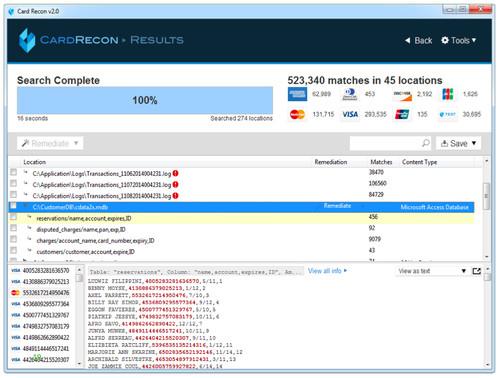Some of the world’s best-known security researchers claim to have
been threatened with indictment over their efforts to find
vulnerabilities in internet infrastructure, amid fears American computer
hacking laws are perversely making the web less safe to surf.
Many
in the security industry have expressed grave concerns around the
application of the US Computer Fraud and Abuse Act (CFAA), complaining
law enforcement and lawyers have wielded it aggressively at anyone
looking for vulnerabilities in the internet, criminalising work that’s
largely benign.
They have also argued the law carries overly severe punishments, is too vague and does not consider context, only the action.
HD
Moore, creator of the ethical hacking tool Metasploit and chief
research officer of security consultancy Rapid7, told the Guardian he
had been warned by US law enforcement last year over a
scanning project called Critical.IO,
which he started in 2012. The initiative sought to find widespread
vulnerabilities using automated computer programs to uncover the
weaknesses across the entire internet.
'Law enforcement are killing careers'
Jeremiah
Grossman, CEO of cyber research firm Whitehat Security, believes that
the aggressive application of the law will lead to researchers quitting
before they’ve found serious problems on the internet, leading to a
degradation of its overall security.
“Right now they are probably killing careers, because they're not accounting for intent,” said Grossman.
“The
chilling effect is on the problems we don't know about yet. The
canaries in the coalmine? They just killed them all. So now we're going
to suffer the consequences.”
The project that landed Moore in
trouble, Critical.IO, uncovered some serious, widespread
vulnerabilities, including one case where between 40 and 50 million
network machines could have been compromised due to weaknesses in a
network protocol, known as Universal Plug and Play (UPnP).
Yet US
law enforcement continued to pursue Moore, even though he was
transparent with his role and the reasons for his scanning, he claimed,
without naming the government body that was responsible.
'The law doesn't encourage experts with the skill to investigate threats'
Moore
said the actions by law enforcement were partly responsible for him
taking a break from the industry, from which he has just returned. But
his biggest fears surround the overall effect on internet security.
“You
need people who can get into the detail with these systems, people who
know how to manipulate the technology to their advantage as a criminal
would,” he added.
“You need these people to help users understand
the threats, and to work with vendors to help them fix them. At the
moment, the law doesn’t encourage this. It doesn’t make any distinction
between bona fide research and criminal activity. It doesn’t help
consumers understand their risk.”
Many other researchers are
believed to have had similar issues. Zach Lanier, senior security
researcher at Duo Security, said many of his team had “run into possible
CFAA issues before in the course of research over the last decade”.
'We warned of a vulnerability - but they claimed we were hacking their systems'
Lanier
said that after finding severe vulnerabilities in an unnamed “embedded
device marketed towards children” and reporting them to the
manufacturer, he received calls from lawyers threatening him with
action.
"We had tried to work with them and sent them all the
details," said Lanier. "When it finally got to the point that we were
going to talk [publicly] about this... a lawyer called us. As is often
the case with CFAA things when they go to court, the lawyers and even
sometimes the technical people or business people don't understand what
it is you actually did. There were claims that we were 'hacking into
their systems'."
The threat of a CFAA prosecution forced Lanier and his team to walk away from the research.
"The
looming threat of CFAA as ammunition for anyone to use willy-nilly was
enough … and had a chilling effect on our research," Lanier added.
The
people running organisations who wield CFAA aggressively when
vulnerabilities are reported to them "probably don't really think about
anything other than dollar signs", he said.
Current attempts at
CFAA reform appear to be foundering. Researchers had hoped the case of
Andrew “weev” Auernheimer would be useful in fighting for reform.
Auernheimer was convicted under CFAA for his part in releasing
information on an AT&T website flaw that was hacked to reveal data
belonging to iPad consumers. But when Auernheimer succeeded in having
his conviction overturned, it was because the judge agreed the case
should not have been heard in New Jersey, rather than because of any
underlying problem with the nature of the CFAA.
Many are still
hopeful Aaron’s Law, named after the late internet activist Aaron Swartz
who killed himself in 2013, will pass. Swartz’s family blamed the
attempts to prosecute Swartz under CFAA, after he downloaded documents
from online resource Jstor from a server at the Massachusetts Institute
of Technology without proper authorisation, were partly to blame for his
death. He was potentially facing 50 years in prison for what many
considered a minor act.
Lawmakers want more severe penalties for hacking
The US Congresswoman Zoe Lofgren had not offered any comment at the time of publication on
claims that Aaron’s Law would not be passing through the House or the Senate.
The
digital rights lawyer Marcia Hoffman says Congress remains divided on
the issue. After high-profile breaches, such as the hack of US retailing
giant Target and alleged Chinese state-sponsored espionage of various
American organisations, many want to see CFAA punishments made more
severe.
“On one side of things there are members of Congress who
say hacking is a big problem and what we ought to be doing is making
penalties tougher. Then on the other side there are people saying the
CFAA is not written in a way that is very clear, it's not entirely
apparent what behaviour is legal under it and the last thing we should
be doing is making penalties tougher.”
According to Hoffman, the
wording of the CFAA makes it difficult to understand what is illegal. In
particular, an internet user who “intentionally accesses a computer
without authorisation or exceeds authorised access” is breaking the law,
even though it doesn't actually explain what authorisation actually is,
Hoffman added. “Judges have been forced to figure out how one expresses
authorisation.”
There are also worries that if CFAA were to be
weakened in favour of the security industry, criminal hackers would
simply claim in their defence they were carrying out research. Moore
said there should be better ways to “define or prove what bona fide
research is”.
“For example, is it the way you disclose the
findings? Is it the type of information you access? This isn’t easy to
solve, but it’s important and worth doing if we want to protect
ourselves.”


